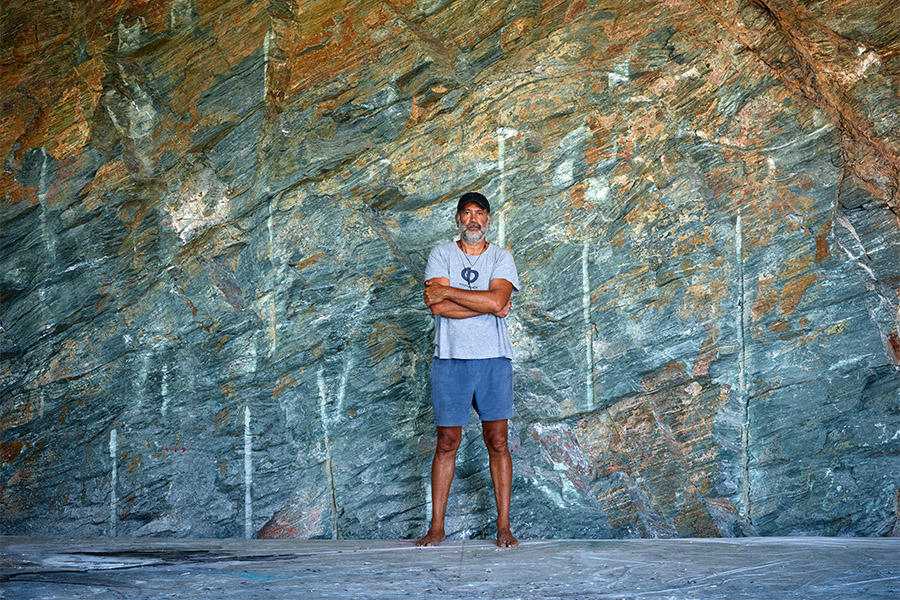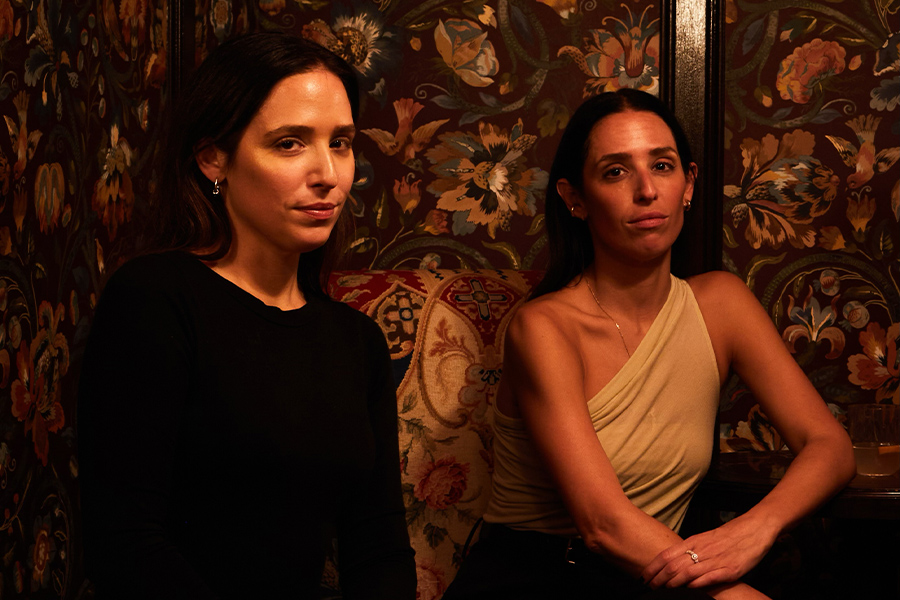Ever since he founded his firm Maidenberg Architecture in 1991, veteran Parisian hotel designer Philippe Maidenberg has been designing some of the most imaginative hotels and restaurants in the world. From the recent World Luxury Hotel Award-winning 123 Sébastopol to the playful Hotel Joke in Paris, the styles of his buzzed-about projects range from purely luxurious to wildly fun—and are always characterized with notes of surprise. Here he reflects on his early experiences, inspiration from high-profile actors, artists, and musicians, and the impact of the elusive je-ne-sais-quoi French touch on hospitality design around the globe.
Did you always know you wanted to be a designer?
Fashion designer or interior designer was an option. When I had to choose, I remember a conversation with my oldest brother and my mother. She asked, ‘Why not architecture?’ That was a great idea. My uncle was an architect and I had occasions to see him at work. Also, as an architect, I can design a tower, a hotel, a chair, and even a dress!
What are some of your first memories of design?
My first project was the offices of my parents’ tour operator company. I had to renovate while about 50 people were working there. It was a nightmare, but such a great experience that I never forgot.
Did where you grew up influence your career path? Give us a bit of your background: college, first jobs, early lessons learned?
Definitely! I am convinced that what I design today is the result of all what I saw when I was a kid. My father was a music and dance lover—interested in aesthetics, fashion; this is my heritage. Those are all the things I develop in my projects. I did all my studies in Paris, where I live. I learned architecture at the Beaux-Arts (Malaquais) from 1984 to 1990. During that time, I did a few internships, specifically one at [the firm of Helmut] Jahn in Chicago and one at I.M Pei and Partners [for] the Grand Louvre in Paris during the construction of the famous and disputed pyramid. Very quickly, I created my own company in 1991. I realized at this point that I did not know anything. Thanks to a great architecture teacher, Paul Ducamp, I learned how to create with a meaning. Nothing could be done without a good explanation. But school did not teach me how to create a company, how to ask authorizations [from] the city hall, etc., [even though] we study more than five years! For this reason, I try to teach these lessons when I have a trainee at my office. Real work education is so important.
Why and how did you start your own firm?
I created my company because I had to be free to design what I want, free to organize my work. At the beginning, I did what I could. I took on the smallest project I could find—apartments, offices, etc. Then, after a few years, the projects became bigger. It was a long road and I had to be very patient, but it was a very good lesson.
Can you discuss some of your recent projects?
We did [Paris properties] Hotel Joke (44 rooms) and Hotel 34B (128 rooms) for my oldest client, the Astotel Group. We began to work together in 1996—20 years ago. For those projects, we created the concept and managed all the phases of rehabilitation and design. This group belongs to the Cachan family (Georges, Serge, and Jean-Pierre). They are about 70 years old, but they are curious like big kids. Each time we work on a project, they expect something different, and it creates a real challenge and a lot of fun. The Hotel Grand Amour belongs to Thierry Costes, Emmanuel Delavenne, and the artist André Saraiva. In that case, we did not create the decoration. The clients did it. We were in charge of the full renovation.
How does storytelling influence the outcome of your projects?
The idea of telling a story is important to me. I do it every day with my 16-month-old kid and he loves it. I think it does not change with the age. When I work with musicians, directors, or actors, I recreate their universe. It is like writing a biography with different tools. Of course, you can feel the result. We did that on Hotel 123 Sébastopol and Hotel du Triangle d’Or. We are working now on another project with other musicians who have a major influence in pop and rock history of music. Real superstars.
What are some of the ideas that have emerged from your collaboration with other experts—such as musicians like Rickie Lee Jones or cinematic figures like Jean-Paul Belmondo—that have influenced or transformed your designs?
Working with those people that I have known of since I was a kid is like a dream come true. First of all, I was happy to see how simple and respectful they are. I think you have to be a great human being to last so long in your job, especially as a musician or an actor. The public can be very cruel with famous people. They did not act as architect or designer, but we had a lot of communication about what I was designing. Because I was recreating their universe, I had to know a lot about them. It was a real travel through continents and decades. Actually, they took me where I did not expect to go.
How does a storytelling or narrative foundation play into the restaurant components of your projects?
The restaurant or the breakfast room of a hotel is the meeting point of the building. It is the place where the design can be more exuberant than in the rooms where it has to be quieter. So when we create a concept, those spaces are usually our playground.
How do hospitality design trends in France differ from those in other parts of the world?
The term ‘French touch’ exists. In the ’80s, when Ian Schrager revolutionized the industry by creating the first boutique hotel, he did it with French designers: Andrée Putman first with Morgans, then Philippe Starck with the Royalton and the Paramount. Our influences here [come] of all kind of creations [for] centuries. We had kings and queens, castles, famous painters, sculptures…the heritage is important.
Are there trends in France in food preparation or cuisine—such as new takes on la cuisine bourgeoise or organic or gluten-free foods—that influence the design of the restaurants in the hotels you’ve created?
Vegan, organic, and gluten-free foods are more and more present here. It took time. You have that in the States already for many years. I am waiting for a new law in Paris that will allow, in a few months, people to build greenhouses on the top of their buildings. It probably means that some chefs will cultivate their own herbs and vegetables on the roof of the hotel. That is going to be very interesting in terms of architecture and ways of living.
Is there a challenging project that you are especially proud of?
The Hotel 123 Sébastopol was a challenge in many ways. I had to contact people like Claude Lelouch, Jean-Paul Belmondo, Ennio Morricone, and Daniele Thompson and convince them to accept my proposition. They are so open-mind that it worked! But then, I had to recreate their universes, which is not an easy exercise.
What are you looking forward to at your office?
The good idea! This is part of my job. How to create something different and that has meaning. It is so difficult sometimes, but it is such a satisfaction when it works. How to be fresh; not becoming an old architect with old Ideas—this is a part of the challenge.
What do you find are the most challenging and exciting aspects of your job?
Finding the good balance is another challenge. How to create something, considering a budget that has a limit. It makes you more creative. One of the most exciting things is to work with incredible artists, going to see them at work, in concert, backstage, on a film shoot. I am lucky to do that with [musicians like] Peter Gabriel, Gilberto Gil, Roger Hodgson, Manu Katche, Rickie Lee Jones, Archie Shepp, Jacques Higelin—people I respect so much for their creations and their behavior.
Is there an architect or designer you most admire? Why?
Frank Gehry is probably the most important to me. I’ve followed him since the ’80s. He has changed the way of creating. There is great documentary by Sydney Pollack called Sketches of Frank Gehry. A genius films another genius. You can see Gehry creating a building with pieces of carton and scissors like a very clever and sensitive kid would do. Then, the process gets more complicated…
What would be your dream project and why?
The one I’m preparing now. I will work with major musicians, some of whose music I have listened to since I was 10 years old, on a hotel project only a few meters away from the mythic Olympia in Paris.
If you could have dinner with anyone, living or dead, who would it be?
Definitely my father, who passed away [a few months] ago, surrounded by other friends and family. Then, some musicians and artist would come for the dessert: Thelonious Monk, Erroll Garner, Dizzy Gillespie, Elvin Jones, Georges Martin, Fred Astaire, Calder. What a wonderful table!
Where would you eat and what would you be having?
We would eat on the stage of the Hollywood Bowl in LA. Nobody in the bleachers, but all kinds of instruments on stage, ready to be used.
If you weren’t a designer, what would you be?
Probably an artist, creating installations, or a music producer.


